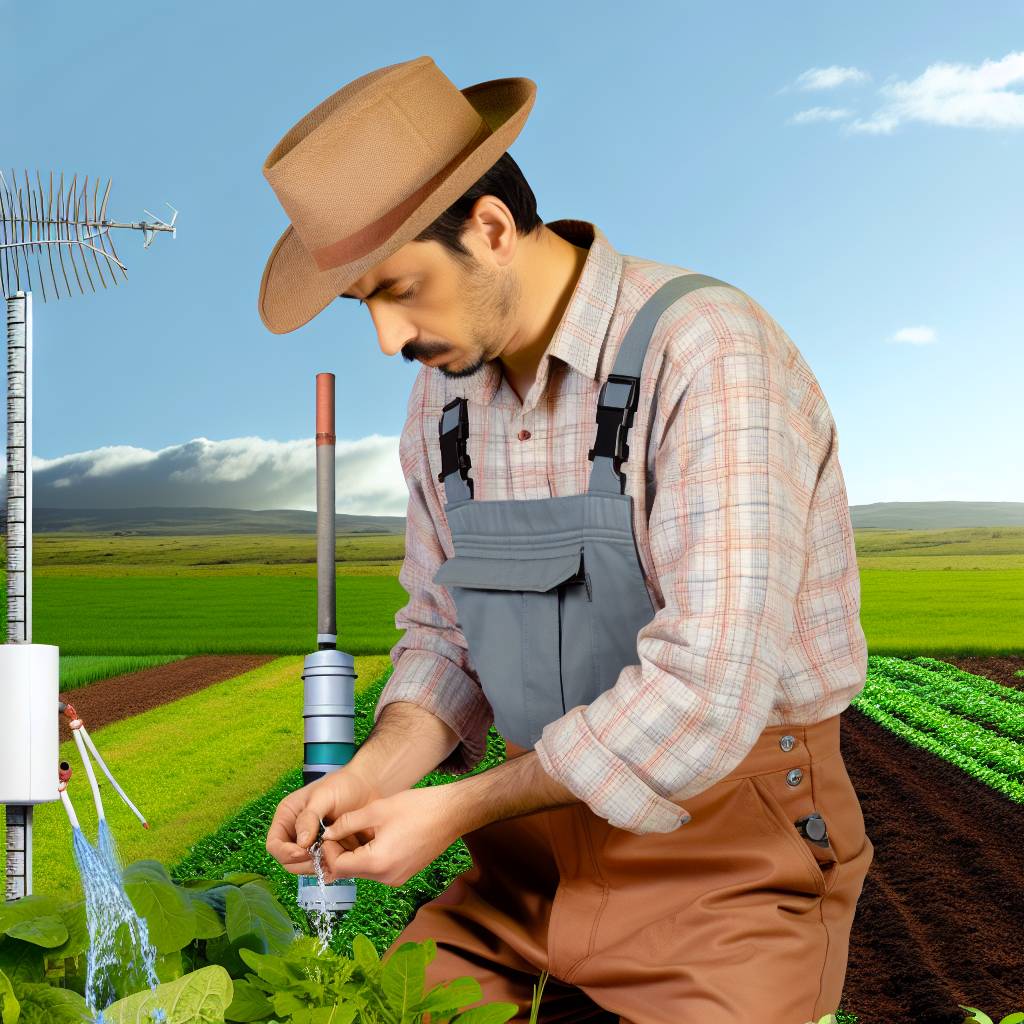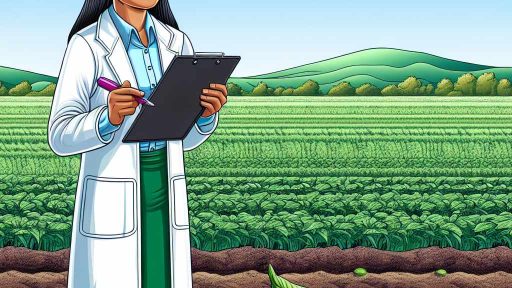Definition of Biodiversity in the Context of Agriculture
Biodiversity refers to the variety of life found in agricultural systems.
It includes different species of plants, animals, and microorganisms.
Moreover, biodiversity encompasses genetic variations within these species.
This diversity is vital for the resilience of farming ecosystems.
Healthy ecosystems support crop production and animal health.
Additionally, biodiversity helps in maintaining soil quality and structure.
For instance, diverse root systems improve nutrient uptake.
Conversely, monoculture practices often degrade soil health.
Furthermore, biodiversity supports beneficial insects and pollinators.
These organisms play a crucial role in crop fertilization and pest control.
Moreover, diverse farming practices enhance food security.
They provide multiple sources of food and income for farmers.
Biodiversity in agriculture promotes sustainability and resilience.
It enables farms to adapt to changing environmental conditions.
Ultimately, biodiversity is a foundation for productive agricultural systems.
Transform Your Agribusiness
Unlock your farm's potential with expert advice tailored to your needs. Get actionable steps that drive real results.
Get StartedThe Role of Biodiversity in Enhancing Soil Health and Fertility
Improving Soil Structure
Biodiversity plays a significant role in improving soil structure.
Different plant species contribute unique root systems.
These root systems create channels in the soil, enhancing aeration.
Consequently, better aeration helps water infiltration and retention.
Moreover, diverse root structures prevent soil compaction.
Enhancing Nutrient Cycling
Diverse ecosystems promote effective nutrient cycling.
Plants and microbes interact to convert nutrients into usable forms.
This process increases nutrient availability for crops.
Additionally, different plants can extract various nutrients from the soil.
This extraction reduces nutrient depletion, maintaining soil fertility.
Encouraging Beneficial Microorganisms
A rich variety of plants attracts beneficial microorganisms.
These microorganisms enhance soil health by breaking down organic matter.
The presence of fungi and bacteria improves nutrient uptake for plants.
Furthermore, they can suppress soilborne pathogens.
This interaction creates a healthier growing environment for crops.
Reducing Soil Erosion
Biodiversity is essential in reducing soil erosion.
Diverse vegetation covers the soil and protects it from erosion.
Increased root mass helps stabilize soil particles effectively.
Consequently, this stability fosters long-term soil productivity.
Building Resilience to Pests and Diseases
High biodiversity enhances resilience against pests and diseases.
With various plants, pest populations can be more effectively managed.
Diverse crop rotations disrupt pest life cycles, minimizing damage.
In addition, healthy ecosystems can buffer against disease outbreaks.
This resilience ultimately leads to improved crop yields.
Showcase Your Farming Business
Publish your professional farming services profile on our blog for a one-time fee of $200 and reach a dedicated audience of farmers and agribusiness owners.
Publish Your ProfileImpact of Diverse Crop Rotations on Pest Management and Disease Control
Enhancing Pest Control through Diversity
Diverse crop rotations serve as a natural pest control method.
This approach disrupts the life cycles of pests and diseases.
When farmers rotate crops, they reduce pest populations effectively.
For example, planting legumes can lower nematode levels in the soil.
Additionally, certain plants may attract beneficial insects like ladybugs.
These insects help control pest populations naturally.
Reducing Disease Prevalence
Crop diversity also plays a significant role in disease management.
Different crops often host different pathogens and pests.
By rotating crops, farmers can break disease cycles effectively.
For instance, avoiding continuous planting of the same species reduces blight risks.
Moreover, introducing resistant varieties can enhance overall farm resilience.
Building Soil Health
Healthy soil promotes robust plant growth and resilience to pests and diseases.
Diverse rotations improve soil structure and nutrient availability.
Practices such as cover cropping add organic matter to the soil.
This organic matter benefits soil microbes, boosting their productivity.
Consequently, healthy soil supports healthy plants, reducing vulnerability.
Long-Term Sustainability
Diverse crop rotations contribute to the long-term sustainability of farms.
They minimize reliance on chemical pesticides and fertilizers.
Farmers who adopt this approach often see improved yield stability.
Moreover, diverse systems tend to be more adaptable to climate changes.
Promoting biodiversity enhances resilience and productivity.
Explore Further: Monitoring and Assessing Pests in IPM Systems
Benefits of Integrating Livestock and Crop Systems for Ecological Balance
Promoting Soil Health
Integrating livestock and crops supports soil health.
Livestock manure provides essential nutrients for crops.
This practice enhances soil fertility over time.
Healthy soil promotes better crop yields.
Furthermore, diverse root systems improve soil structure.
Enhancing Pest Control
Mixed farming systems naturally manage pests.
Livestock can help control weeds, reducing competition for crops.
In addition, diverse habitats attract beneficial insects.
These insects aid in pollination and pest reduction.
Consequently, farmers use fewer chemical pesticides.
Improving Crop Resilience
Crop diversity enhances resistance to diseases.
Different plants can bolster the ecosystem against threats.
Mixing livestock can provide shelter for sensitive crops.
Moreover, rotational grazing prevents overgrazing.
It also replenishes pasture health for livestock.
Utilizing Available Resources Efficiently
Integration maximizes resource utilization on farms.
Livestock can graze on crop residues after harvest.
This practice minimizes waste and maximizes output.
Showcase Your Farming Business
Publish your professional farming services profile on our blog for a one-time fee of $200 and reach a dedicated audience of farmers and agribusiness owners.
Publish Your ProfileAdditionally, it creates value from by-products, such as manure.
Therefore, farmers can achieve a cyclical farming model.
Facilitating Economic Benefits
Integrated systems can lead to higher overall profits.
Diverse income streams mitigate financial risks for farmers.
Furthermore, local markets may offer premium pricing for organic products.
These practices attract consumer interest in sustainable farming.
Overall, such systems contribute to long-term financial stability.
See Related Content: Improving Crop Yields through Rotation and Diversity
Case Studies Showcasing Successful Biodiversity Practices on Farms
Regenerative Agriculture in Action
Sunnyvale Farm implemented regenerative agriculture methods successfully.
They diversified crops to improve soil health and resilience.
This approach created a habitat for beneficial insects.
Consequently, pest populations decreased naturally.
Customers reported improved crop quality and taste.
Agroforestry Strategies at Green Valley
Green Valley adopted agroforestry practices for increased biodiversity.
Trees were integrated alongside crops to provide shade.
This method reduced water evaporation during hot months.
Farmers at Green Valley noted higher yields on intercropped fields.
Additionally, soil erosion was significantly reduced.
Community-Based Seed Sharing at Harvest Homestead
Harvest Homestead launched a community seed-sharing initiative.
Local farmers exchanged seeds to preserve heritage varieties.
This practice fostered genetic diversity among crops.
As a result, many farmers saw increased resilience against diseases.
The community strengthened its ties through this collaboration.
Livestock Integration on Harmony Acres
Harmony Acres practiced livestock integration in their farming system.
Animals grazed on cover crops, enriching the soil naturally.
This fold approach reduced the need for synthetic fertilizers.
Moreover, pest problems decreased as predators thrived.
Farmers reported better health and productivity in livestock.
Pollinator Pathways at Blossom Fields
Blossom Fields established pollinator pathways throughout the farm.
They planted native wildflowers to support local bee populations.
Pollination improved for various crops as a result.
Farmers noticed increased fruit and seed set in their fields.
This initiative enhanced the overall biodiversity on the farm.
Explore Further: Crop Rotation Techniques for Long-Term Soil Fertility

Economic Advantages of Adopting Biodiversity in Farming Systems
Increased Productivity
Biodiversity significantly boosts farm productivity.
Different crops can enhance nutrient use in the soil.
This leads to healthier plants and higher yields.
Additionally, diverse species can offer pest resistance.
Reduced Risk and Increased Stability
Diverse farming systems reduce economic risks.
If one crop fails, others can still thrive.
Showcase Your Farming Business
Publish your professional farming services profile on our blog for a one-time fee of $200 and reach a dedicated audience of farmers and agribusiness owners.
Publish Your ProfileThis stability ensures consistent income for farmers.
Furthermore, it buffers against climate variability.
Access to New Markets
Biodiversity opens doors to new market opportunities.
Specialty crops often attract premium prices.
Farmers can diversify their products and clientele.
This increases profitability and reduces dependency on single crops.
Long-Term Sustainability and Cost Reduction
Adopting biodiversity leads to sustainable farming practices.
It reduces the need for synthetic fertilizers and pesticides.
Consequently, farmers can lower their operational costs.
Healthy ecosystems also help ensure long-term soil fertility.
Community and Economic Development
Biodiverse farms contribute to local economies.
They create jobs in farming, processing, and distribution.
Furthermore, they preserve traditional farming practices.
This strengthens community ties and local culture.
Explore Further: Conservation Tillage Tools Every Farmer Should Know
Strategies for Implementing and Maintaining Biodiversity Practices
Adopt Crop Diversity
Farmers should plant a variety of crops each season.
This practice enhances soil health and reduces pest outbreaks.
Additionally, crop rotation helps maintain nutrient levels in the soil.
For instance, legumes can replenish nitrogen, benefiting subsequent crops.
Integrate Cover Crops
Utilizing cover crops is a vital strategy for enriching soil biodiversity.
Cover crops prevent soil erosion and enhance water retention.
They also provide habitat for beneficial insects and microorganisms.
Farmers can choose species such as clover, rye, or vetch.
Encourage Natural Predators
Implementing measures to attract natural pest predators boosts biodiversity.
Planting native flowering species can draw in pollinators and predatory insects.
This approach reduces reliance on chemical pesticides.
For example, ladybugs can help control aphid populations.
Create Habitat Zones
Setting aside habitat zones promotes wildlife diversity on farms.
These areas can include hedgerows, wildflower buffers, or wetlands.
Such zones provide food and shelter for various species.
Moreover, they support ecosystem services like pollination and pest control.
Practice Sustainable Livestock Management
Farmers should integrate livestock with crop production.
Rotational grazing systems benefit both plants and animals.
This technique reduces soil compaction and promotes nutrient cycling.
Additionally, livestock can access forage, improving their health.
Engage in Community Collaboration
Cooperating with neighboring farms can enhance biodiversity practices.
Farmers can share resources and knowledge on sustainable methods.
This collaboration promotes a network of diverse ecosystems.
Consequently, it strengthens local food systems and resilience.
Future Prospects of Biodiversity in Addressing Climate Change in Agriculture
Strengthening Ecosystem Services
Biodiversity significantly enhances ecosystem services on farms.
Showcase Your Farming Business
Publish your professional farming services profile on our blog for a one-time fee of $200 and reach a dedicated audience of farmers and agribusiness owners.
Publish Your ProfileThese services include pollination, nutrient cycling, and pest regulation.
Consequently, diverse ecosystems improve crop yields and resilience.
This approach supports sustainable agricultural practices in changing climates.
Enhancing Genetic Diversity
Genetic diversity among crops leads to better adaptability.
It helps develop varieties resistant to pests and diseases.
Farmers can rely on resilient plants during climate fluctuations.
Thus, they maintain productivity despite adverse conditions.
Promoting Soil Health
Biodiversity contributes to healthier soils.
Diverse root systems enhance soil structure and fertility.
This promotes greater water retention and nutrient availability.
Healthy soils support robust plant growth in unpredictable weather.
Adaptation Strategies for Farmers
Farmers can incorporate biodiversity into their practices.
They can use crop rotations and intercropping to increase variety.
Moreover, integrating livestock and crops fosters symbiotic relationships.
These strategies enhance resilience against climate-related challenges.
Building Community and Knowledge Sharing
Biodiversity encourages local community engagement in agriculture.
Farmers can exchange knowledge about best biodiversity practices.
This collaboration strengthens community resilience to climate impacts.
As a result, agricultural practices evolve toward sustainability.
Policy Support for Biodiversity
Government policies should promote biodiversity-friendly farming practices.
Financial incentives can encourage farmers to adopt sustainable methods.
Regulatory frameworks must support ecosystem conservation initiatives.
Such measures will enhance agricultural resilience and food security.




